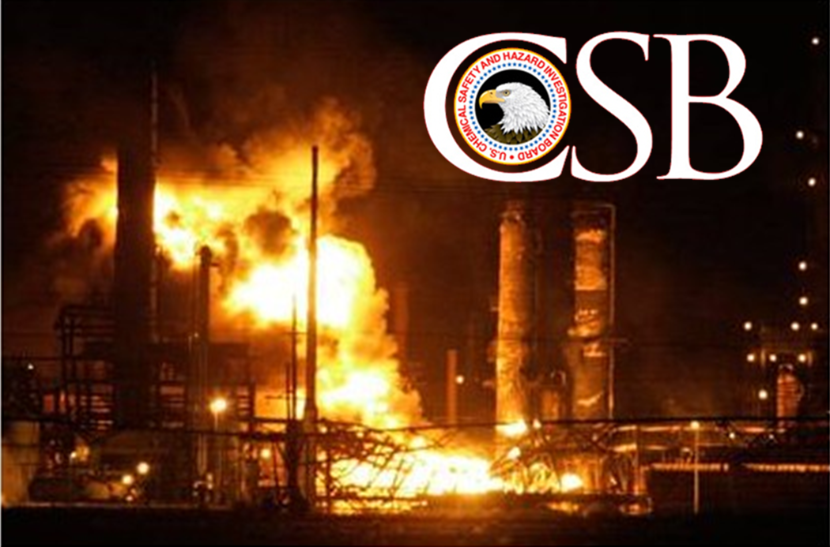“There are two kinds of learning: experience, which is gained from your own mistakes, and wisdom, which is learned from the mistakes of others.” — John C. Maxwell
The Chemical Safety Board is not an enforcement agency. So, it came as a shock to many when the CSB issued the Accidental Release Report Rule (40 CFR 1604), a regulation requiring facilities to report significant accidents involving hazardous chemicals. Until then, the CSB relied on public reports to know about incidents that might warrant the attention of their limited staff.
Since March 2020, however, U.S. companies are required to report accidents involving hazardous chemicals that resulted in one or more fatalities, one or more in-patient hospitalizations, or property damage in excess of $1,000,000.
On July 29, 2022, the CSB announced that the most recent summary of the data in reports was available.
Mandatory Reporting
The requirement to report these accidents is mandatory. While the CSB has no enforcement authority, they will refer facilities that fail to comply to the EPA, which does have enforcement authority. The CSB granted a 1-year grace period to get used to this new requirement. The first accident that was reported occurred on April 10, 2020, and for the first 8 months the requirement was in place, 30 accidents were reported—less than four accidents per month. Since then, reporting has increased to an average of almost seven accidents per month.
Altogether, 162 accidents have been reported to the CSB in the period from April 2020 through July 2022.
Consequences of These Accidents
The CSB is interested in hazardous chemical accidents that result in fatalities, in-patient hospitalizations, or significant property damage. Of the 162 reported accidents, 25 resulted in fatalities. There were 92 to that resulted in injuries so severe as to require hospitalization and 68 of the accidents resulted in more than $1,000,000 in property damage. Obviously, some accidents resulted in two of these consequences. One accident, the explosion and fire at Yenkin-Majestic OPC Polymers in Columbus, Ohio that occurred on April 8, 2021, resulted in all three.
Where Were These Accidents?
The accidents were distributed across the country. Altogether, 36 states and the Virgin Islands were home to at least one accident. While there is no state without a facility regulated by the EPA’s Risk Management Planning rule, there were 14 states that did not have a qualifying accident. Some, like Alaska, Hawaii, Rhode Island, and Vermont, are not host to much chemical industry. Others, like Florida, New Jersey, Mississippi, and Wisconsin, have a significant chemical industry presence, yet had no accidents reported.
The two states with the most accidents—Louisiana and Texas—each had 30 accidents, meaning that these two states together accounted for almost 40% of all the accidents reported.
Who Had These Accidents?
The accidents occurred at facilities representing a broad spectrum of the chemical process industries. Refineries were the location of 26 of these incidents, paper mills were the location of 6, and food processing plants were the location of 11.
Sadly, five facilities appeared on the list twice. The data doesn’t give specific information about the accidents, so it is hard to tell whether these facilities repeated their mistakes or made new ones. No facility appeared on the list more than twice.
There were six companies that appeared on the list four or more times. Kinder Morgan reported six separate accidents, all at different facilities. CenterPoint Energy and Marathon each reported five separate accidents, again all at different facilities. Tyson Foods reported four separate accidents, all at different facilities. Valero and Westlake also reported four separate accidents each, but at three different facilities each.
Lessons Learned
Each of these 162 accidents represents a learning opportunity. The CSB will be able to investigate many of them but does not have the resources to investigate them all. For us to learn from them, we need to understand them. If the CSB does investigate, or better still, prepares one of their excellent videos, we can learn from the experts at the CSB and apply that experience to making our own facilities safer. For those accidents that the CSB is unable to investigate, we need to learn what we can from public sources to apply the lessons learned to our own facilities.
Gaining Wisdom
There is an old saying—it’s been around for centuries with the original author lost to anonymity—that states “you must learn from the mistakes of others—you will not live long enough to make them all yourself.” The purpose of the CSB is to help us all to learn from the mistakes of others, so we don’t have to make those mistakes ourselves.
I invite you to look the CSB’s recently published list of accidents over. If there are a few incidents that capture you imagination, do some research to find out what they were about. You don’t have to wait for the CSB to come out with a report. Your efforts will be rewarded with wisdom and may even help you to make your own workplace safer.
